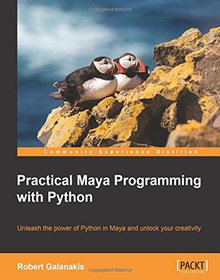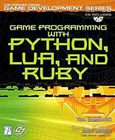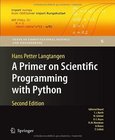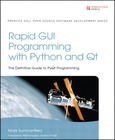Practical Maya Programming with Python

Book Details:
| Publisher: | Packt Publishing |
| Series: | Packt , Practical |
| Author: | Robert Galanakis |
| Edition: | 1 |
| ISBN-10: | 1849694729 |
| ISBN-13: | 9781849694728 |
| Pages: | 321 |
| Published: | Jul 25 2014 |
| Posted: | Nov 19 2014 |
| Language: | English |
| Book format: | |
| Book size: | 2.17 MB |
Book Description:
Unleash the power of Python in Maya and unlock your creativity Overview Create and customize UIs using standard tools and libraries Understand how Maya can leverage advanced Python features Make your tools, and Maya itself, fully automatable In Detail Autodesk Maya is a 3D computer graphics software. It offers a vast and flexible set of features utilizing Python. It is not difficult to get started using Python in Autodesk Maya, but it can be difficult to go from writing procedural, MEL-inspired tools to building the powerful yet simple systems that Python promises. Practical Maya Programming with Python will help you master both Python and Maya. With thorough explanations, illustrative examples, and complete sample projects, you will learn how to use Python to charm Maya into obeying your every command. Practical Maya Programming with Python will teach you how PyMEL works as well as how to deal with errors and write composable code in Python. What you will learn from this book Understand the architecture of Python objects, Maya nodes, and PyMEL Write composable code that is modular and re-usable Make Maya "Pythonic" through the use of decorators and context managers Learn about different Maya UI options and libraries Use PySide and PyQt to build Maya user interfaces Turn Maya into a server that can be controlled remotely Understand how to use Python with Maya's API Conquer custom nodes using Python's dynamic type creation Approach "Practical Maya Programming with Python" is a practical tutorial packed with plenty of examples and sample projects which guides you through building reusable, independent modules and handling unexpected errors. Who this book is written for If you are a developer looking to build a powerful system using Python and Maya's capabilities, then this book is for you. Practical Maya Programming with Python is perfect for intermediate users with basic experience in Python and Maya who want to better their knowledge and skills.
Download Link:
Related Books:
Game Programming with Python, Lua and Ruby
Get ready to dive headfirst into the world of programming! "Game Programming with Python, Lua, and Ruby" offers an in-depth look at these three flexible languages as they relate to creating games. No matter what your skill level as a programmer, this book provides the guidance you need. Each language is covered in its own section?you'll begin with the basics of syntax and style and then move on to more advanced topics. Follow along with each language or jump right to a specific section! Similar features in Python, Lua, and Ruby?including functions, string handling, data types, commenting, and arrays and strings?are examined. Learn how each language is used in popular game engines and projects, and jumpstart your programming expertise as you...
A Primer on Scientific Programming with Python
2nd Edition
The book serves as a first introduction to computer programming of scientific applications, using the high-level Python language. The exposition is example- and problem-oriented, where the applications are taken from mathematics, numerical calculus, statistics, physics, biology, and finance. The book teaches "Matlab-style" and procedural programming as well as object-oriented programming. High school mathematics is a required background, and it is advantageous to study classical and numerical one-variable calculus in parallel with reading this book. Besides learning how to program computers, the reader will also learn how to solve mathematica...
Rapid GUI Programming with Python and Qt
The Insider's Best-Practice Guide to Rapid PyQt 4 GUI Development Whether you're building GUI prototypes or full-fledged cross-platform GUI applications with native look-and-feel, PyQt 4 is your fastest, easiest, most powerful solution. Qt expert Mark Summerfield has written the definitive best-practice guide to PyQt 4 development. With Rapid GUI Programming with Python and Qt you'll learn how to build efficient GUI applications that run on all major operating systems, including Windows, Mac OS X, Linux, and many versions of Unix, using the same source code for all of them. Summerfield systematically introduces every core GUI development technique: from dialogs and windows to data handling; from events to printing; and more. Through the book's real...
2007 - 2021 © eBooks-IT.org



